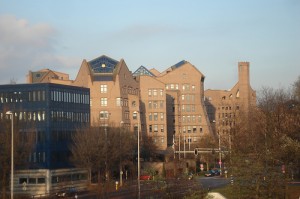Sweet little baby in the manger I don’t even know where to start with this. A family portrait of our bloat if there was a need for a new one. The economic ‘slowdown’ (c’mon!) has led to a growing surplus of so many things we’ve been overproducing as a means to take advantage of growing markets… either we’re such children about this or our economic system remains too primitive as to allow for self-destructive indulgence – which are basically the same things.
Anyway, cows. Too many. Producing far too much milk. So much that the government price floor kicks in and we begin to buy the excess while producers continue to feed and milk Elsie so as not be caught flat-footed when things ‘recover’. Please. And this.
In China, for instance, per-person dairy consumption nearly doubled in just five years, to 63 pounds in 2007 from 33 pounds in 2002 (though it remains far below the per-capita consumption in the United States of about 580 pounds), according to the U.S. Dairy Export Council. The growth translates into the need for nearly 40 billion pounds more milk each year, roughly equal to California’s annual milk production.
Okay, stop right there. 580 pounds of milk per year per person, and the Chinese are up to 63? Forget methane and the effects of cow flatulence on CO2 emissions for a second and just think about how
much more we are consuming than, one might suspect, we really need. It’s not just a little extra but on the level of orders of magnitude. I do not know what the optimum consumption of milk per annum would be. But I do think that whether it is 137 or 683 lbs. it should be separate and apart from how I define the idea of personal freedom. If I want to consume 974 pounds per year, fine. Set a healthy range for my consumption (b/c I’m obviously incapable) and charge me more when I whiz past it. For the milk, for the extra weight on my plane ticket, for the added trips to the doctor, for the car tips to work b/c I’m feeling too ‘slow’ to bike in. The impulse to set price floors for the cost of anything is being calibrated in the wrong direction. Let’s determine what consuming all this milk is costing us and set price parameters based on that.
As a part of this we can begin to understand all of these excess points in housing, automobiles, and commodities of all sorts as part and parcel of the ‘slowdown’. We’re slowing down because we’re bloated; when you’re out of shape and out of breath, you can’t help but slowdown. I don’t mean to make this sound so simple and will stop if others will throttle back on making it seem so complicated.


